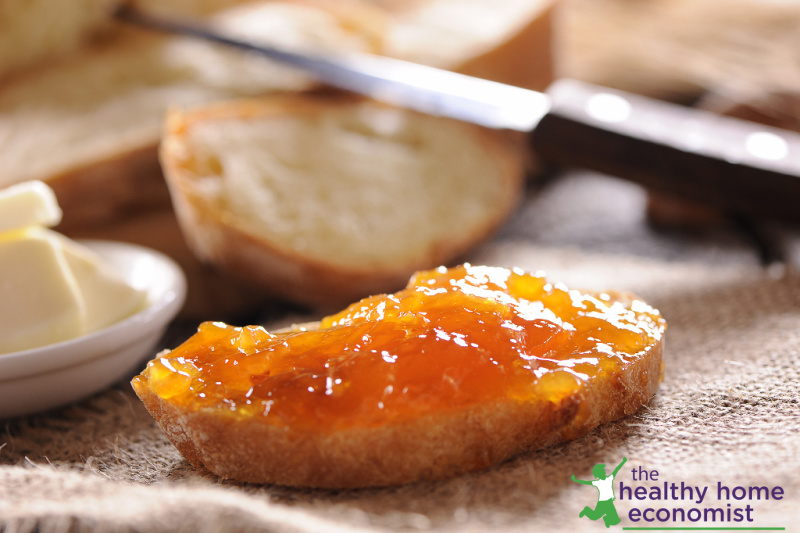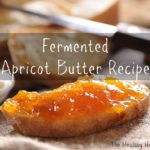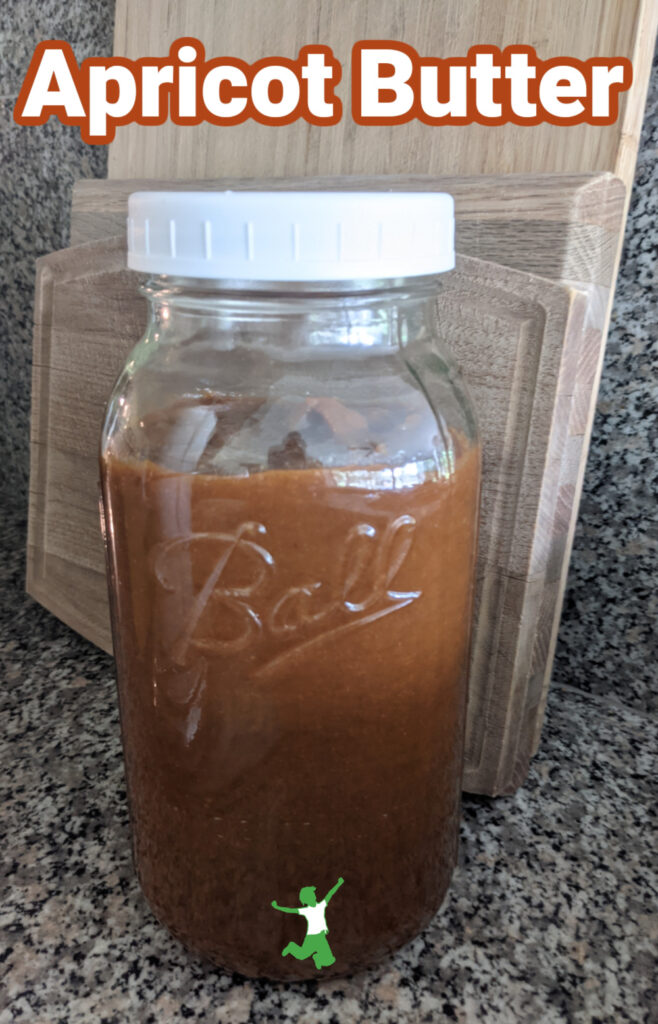A lightly fermented apricot butter recipe that is deliciously sweetened with honey. It can be enjoyed on pancakes, oatmeal, toast and more.

Move over apple butter! Apricot butter is hands-down my husband’s favorite fermented food. The written recipe and video demo below shows you exactly how to make it using the Nourishing Traditions method. You will find innumerable uses for apricot butter in your kitchen.
As with all traditionally fermented foods, this recipe is loaded with probiotics and enzymes. As such, it greatly assists digestion.
In our home, we use apricot butter as a spread on pancakes, in soaked oatmeal, or even just by itself on a big spoon as a sweet, afternoon pick-me-up!
My husband likes it loosely mixed with raw butter and some crushed nuts for a quick, enzyme rich breakfast.
I love it on a slice of real sourdough toast.
Since it is loaded with probiotics and enzymes, it will help cooked foods that are eaten along with to be digested more easily too.

Apricot Butter Recipe
This lightly fermented apricot butter recipe is both delicious and beneficial to your gut health. It can be enjoyed with pancakes, oatmeal and many other foods.
Ingredients
- 4 cups unsulphured dried apricots preferably organic
- 1 Tbsp sea salt
- 1/4 cup liquid whey
- 1/4 – 1/2 cup raw honey preferably local
- vegetable starter optional. Use instead of whey if needed.
Instructions
-
Cook apricots in filtered water until soft for about 20 minutes.
-
Let cool for about 10 minutes and then process in food processor with the rest of the ingredients.
-
Place in a 1 quart glass mason jar and close the lid tightly.
-
Leave on the counter for 2 days and then refrigerate.
-
Use within 2 months.
-
Enjoy as a probiotic rich topping for oatmeal, toast, pancakes, waffles and more!
Recipe Video
Recipe Notes
If you wish to substitute fresh apricots for dried, note that 6 pounds of fresh apricots (with pits) = 1 pound dried apricots.

Other Fermented Food Recipes to Enjoy








Joan! You must tell us how your figs turned out! I am living in Turkey and am surrounded by fresh figs on the verge of being overripe. Oh, and did you leave the skins on?
Sarah,
I had fresh figs from a friends tree , picked yesterday . I made this recipe, same measurement , but with the figs…here’s hoping it works.
Joan
Hi, I wonder if I can replace whey with water kefir… I have a bad feeling every time I use whey.
So happy with how this turned out!! We are really enjoying it. Thanks for the tutorial.
I made this just recently and I do like it! My question is how do you know if it’s fermented enough? I had it out on the counter for 2 full days. I kind of expected it to have some effervescence to it, but it doesn’t. Thank you!
Hi Billie, there is a slight sourness to the taste .. notice how easy it is to digest which is a major giveaway for the successful fermentation! 🙂
Do you think I could use organic dried peaches rather than apricots? For the apricot butter? I read in Nourshing Traditions and it said you could substitute apples or pears but no mention of peaches. Thank you!!
Hi Sarah,
I am a bit confused when you call the food "raw" because you are cooking the apricots. One simple change that would make this dish "more raw" would be to pour very hot water over the dried apricots and let them sit until very soft. This might take 30 minutes to one hour to soften.
Thank you very much for your videos on fermented foods. I link to your website so that people interested in lacto-fermentation can see how to make this important traditional food.
I just checked, and http://www.bulkfoods.com has dried, organic Turkish apricots if you buy in bulk! I'm excited to try this one… Thanks!
Yes, absolutely! If you have a source for fresh, organic apricots, by all means use them!
Could you use fresh apricots, if you cook them?